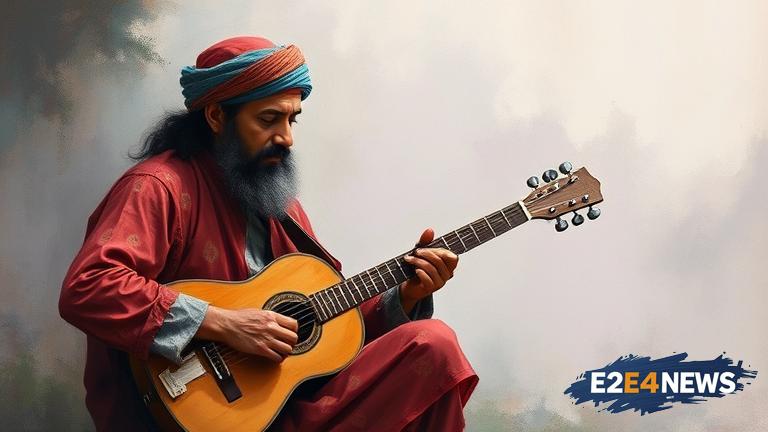In the picturesque valley of Kashmir, a skilled artisan is fighting a lone battle to preserve a traditional musical instrument that has been an integral part of the region’s cultural heritage for centuries. The instrument, known as the ‘Santoor’, has been a staple of Kashmiri music and culture, with its unique sound and craftsmanship making it a beloved part of the region’s identity. However, with the advent of modern technology and changing musical trends, the Santoor has been slowly fading into obscurity, leaving the artisan with a daunting task of preserving its legacy. The artisan, who has spent decades mastering the craft of making and playing the Santoor, is determined to keep the tradition alive, despite the numerous challenges he faces. With the help of a few dedicated students, he is working tirelessly to pass on his knowledge and skills to the next generation, in the hope that they will carry on the legacy of this ancient instrument. The Santoor, with its rich, resonant sound, has been a part of Kashmiri culture for centuries, with its origins dating back to the ancient Persian Empire. The instrument’s unique sound is created by the striking of strings with a pair of lightweight mallets, producing a hauntingly beautiful melody that has captivated audiences for generations. Despite its rich history and cultural significance, the Santoor is facing a severe crisis, with the number of skilled artisans and players dwindling rapidly. The artisan, who is one of the last remaining custodians of this traditional craft, is deeply concerned about the future of the Santoor, and is working tirelessly to promote its preservation. He believes that the Santoor is not just a musical instrument, but a symbol of Kashmiri culture and identity, and its loss would be a tragedy of immense proportions. The artisan’s efforts to preserve the Santoor have not gone unnoticed, with several organizations and individuals coming forward to support his cause. However, despite the growing awareness and support, the road ahead remains challenging, with the artisan facing numerous obstacles in his quest to save the Santoor. One of the major challenges he faces is the lack of interest among the younger generation, who are increasingly drawn to modern music and technology. The artisan believes that this is a result of the lack of exposure and education about the importance of traditional music and crafts, and is working to address this issue through his teaching and outreach programs. Another challenge he faces is the scarcity of raw materials and skilled labor, which is making it difficult for him to produce high-quality Sontoors. The artisan is also concerned about the impact of climate change on the traditional crafts and music of Kashmir, with the changing weather patterns and rising temperatures affecting the quality of the raw materials and the instrument’s sound. Despite these challenges, the artisan remains optimistic, and is determined to continue his fight to preserve the Santoor and Kashmiri culture. He believes that the preservation of traditional music and crafts is essential for the cultural and social well-being of the community, and is working to create a movement to promote and support the artisans and musicians who are keeping these traditions alive. The artisan’s story is a testament to the power of dedication and passion, and serves as a reminder of the importance of preserving our cultural heritage. As the world becomes increasingly globalized and homogenized, it is more important than ever to preserve our unique cultural traditions and crafts, and to support the artisans and musicians who are keeping them alive. The Santoor, with its rich history and cultural significance, is a symbol of the beauty and diversity of Kashmiri culture, and its preservation is essential for the cultural and social well-being of the community. The artisan’s quest to save the Santoor is a reminder that cultural preservation is a collective responsibility, and that we all have a role to play in promoting and supporting the artisans and musicians who are keeping our traditions alive.
